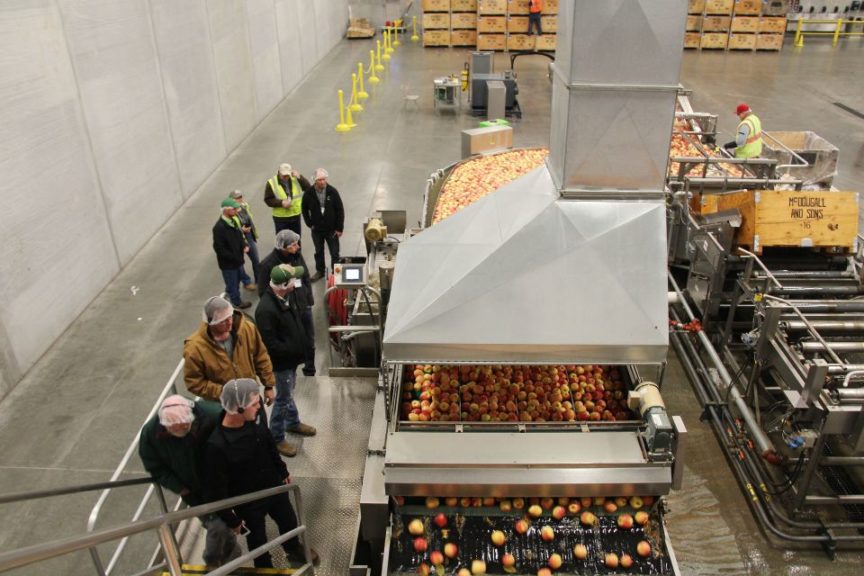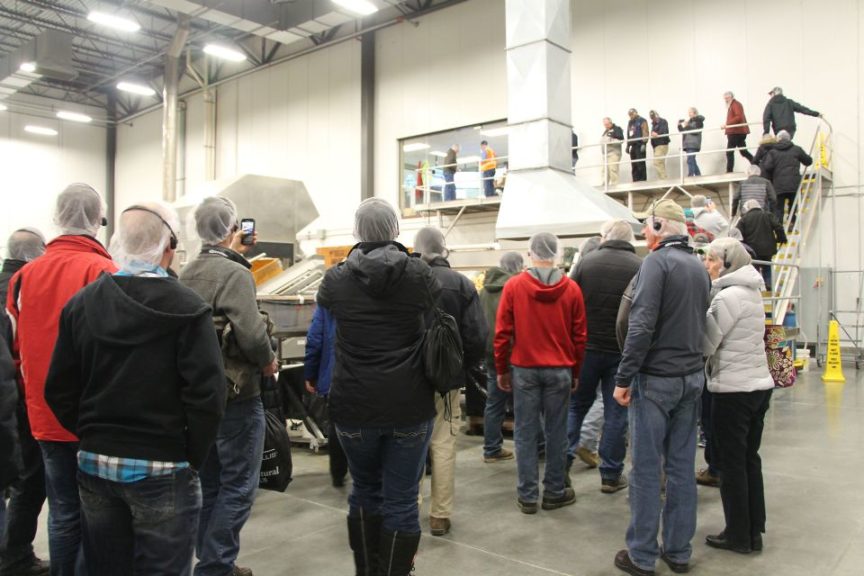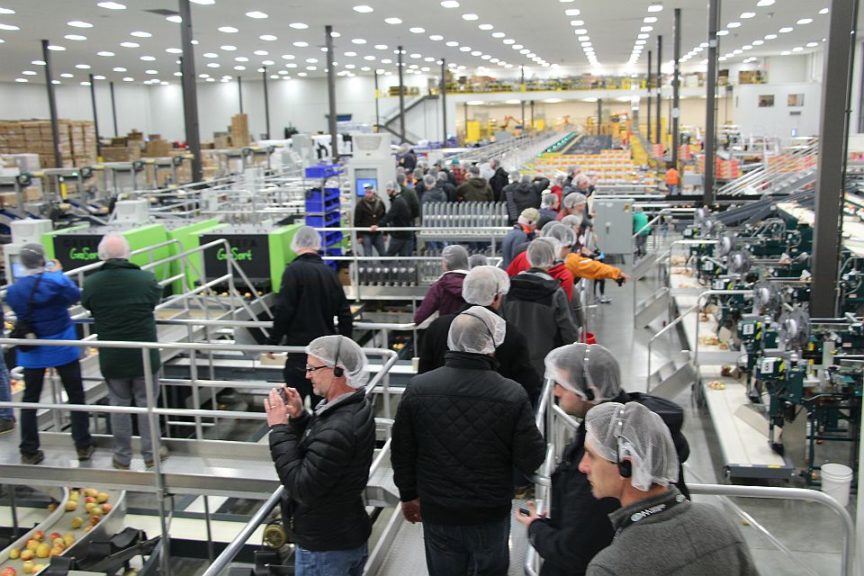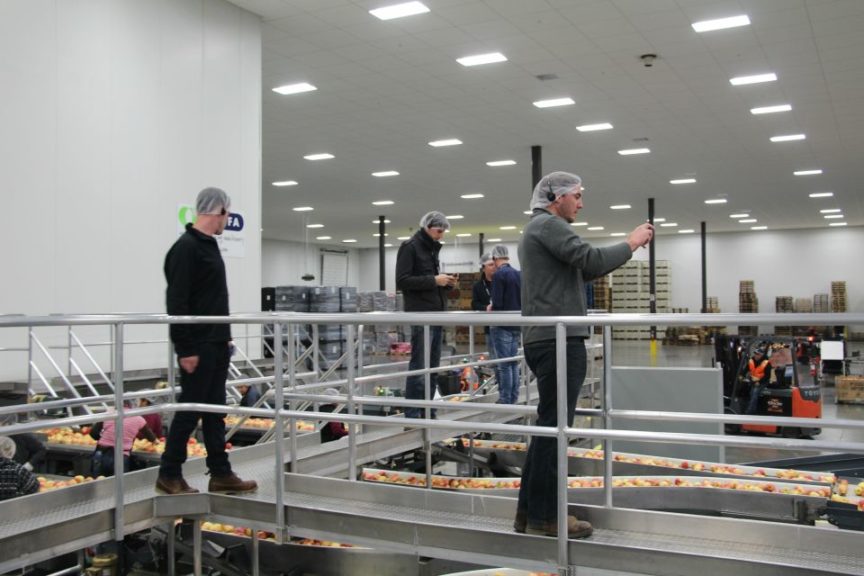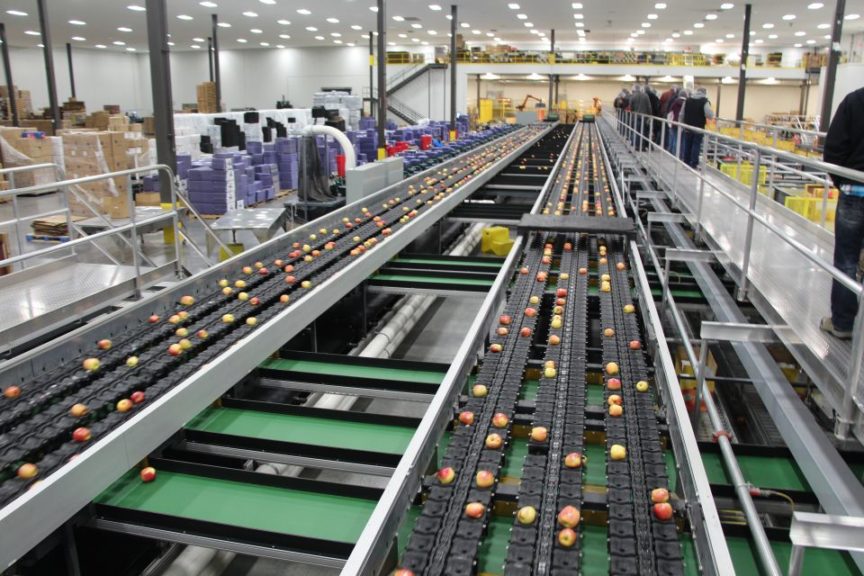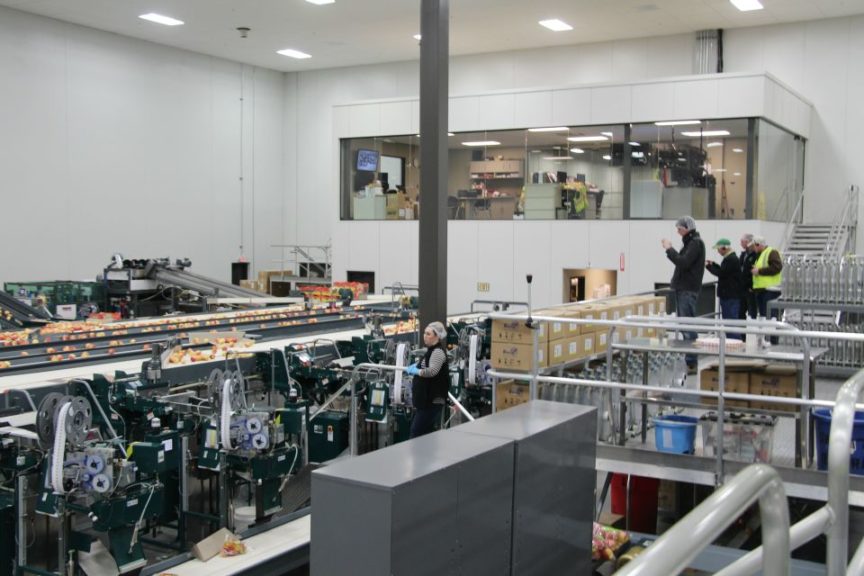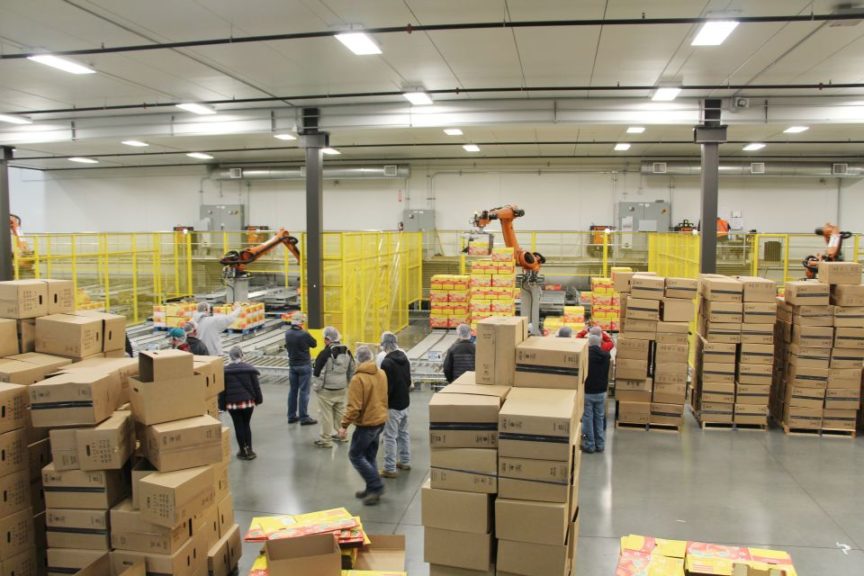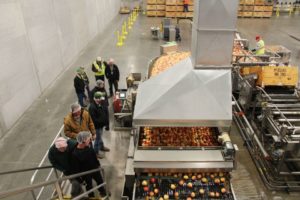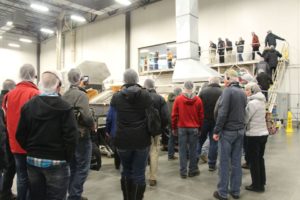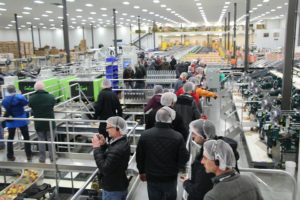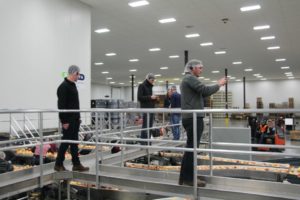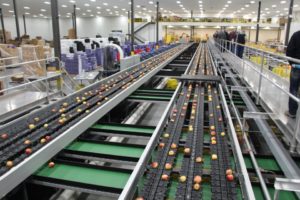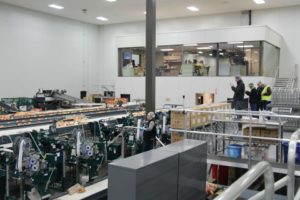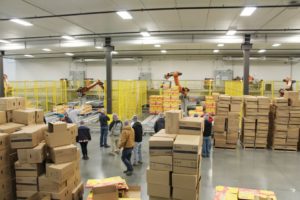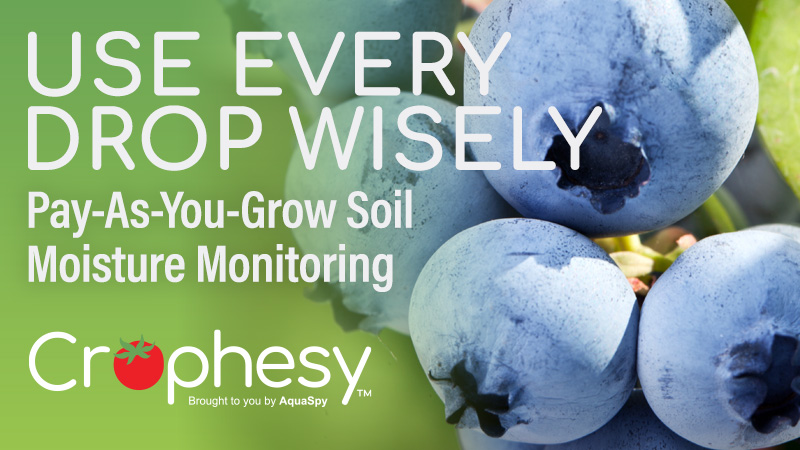Future Is Now At IFTA Conference
While Day 2 of the International Fruit Tree Association’s annual conference focused on setting up an apple orchard properly, the final day of the conference focused on where orchards can – and likely should – go in the not too distant future.
Promising to push growers with his “provocative” Carlson Lecture, Stuart Tustin of Plant and Food Research in New Zealand said he was going to take everyone to “the edge of the fruit universe.”
He encouraged growers to consider a planar cordon concept — with multiple vertical stems — to control and distribute the canopy growth. The ultimate goal is to increase light into the canopy. Bi-axe trees offer many benefits, Tustin said. Not only filling in space with less trees and closer rows, but bi-axe trees grow 30% more dry weight than a single leader tree.
“If we manage light and the canopy, we don’t see the need to renew uprights at all,” he said, noting pruning increases vegetative growth. “We prune too much. A little is good, too much is bad.
These planar cordons help distribute growth on the tree evenly. The planar canopy inhibits branching from apical dominance. This minimal branching and growth allows the tree to devote its resources directly to producing fruit.
“Fruit is the only growth regulator I trust,” he says. “It’s the cheapest one you have.”
The best canopy management, he said to use the minimum branches needed to achieve the maximum light interception — getting more fruit from less tree. Quantity is important, but quality must be a focus of tree management.
Tustin said the goals from his system is to get anywhere from 60% to 65% light interception at maturity. Currently, his young planar cordon plantings are getting 45% light interception.
“We’re getting substantial fruit for light interception,” he said.
Exceptional orchards in current system, he said, can max out at 100 bins/acre, but this production will level out as a function of orchard design.
Tustin says his planar canopy system is quite promising, however growers may not necessarily transition to his system immediately,
“We’ve got a heck of a lot invested in current orchards and that’s not going to go away overnight because some guy says we should have upright fruiting shoots,” he said.
While there has been a lot of talk about what type of orchard system needs to be planted in order to accommodate robotics, Tustin likened that to putting the cart before the horse.
“Let’s bring robotics to amend horticulture,” he said.
On The Doorstep
Other sessions for the day focused on the art and science of fruiting, pollination, cropload, fruit quality, and storage. Growers were keenly attuned to not just one but two presentations on two separate robotic apple harvesters. In fact, robotic harvesters were mentioned throughout previous presentations and at orchard tour stops.
“Horticulture will drive automation,” session leader and IFTA board member Jeff Cleveringa said.
Growers are fairly aware of Abundant Robotics’ harvester, and CEO Dan Steer caught growers up to speed on where his equipment is in the development and commercialization. Steer says he expects a commercial system to be in place for fall harvest in 2018.
He encouraged growers to think about fruit accessibility as far as being able to successfully integrate a device. Wood that is a year or older may get in the way.
“We’d be foolish to design a machine that couldn’t work in today’s systems,” Steer said. “If you can drive an orchard tractor, you can drive in this.”
Steer said the system can color pick and handles most sizing easily – although 27s were a design challenge, he said. The system does quite well with night harvest.
“The hard time is picking in the day,” he said noting glare from the sun can be problematic for the vision system.
“Automation is on your doorstep,” he said. “We’re able to work with a lot of systems already in place and where you’re going.
Although Steer said the Abundant Robotics team is focused on getting apple harvest done well, he left the door open to cherries and other fruits in the future.
Following Steer’s presentation was Avi Kahani, CEO of FFMH-Tech. Kahani’s company also is developing a robotic apple harvester. His protoype has 12 arms, a clipper, automatic bin replacement, and data collection. Kahani says his harvester works best in rows no less than 10 feet wide.
He’s pairing his system with FieldIn data to provide a software model to pick different fruits and track fruit bins and include data on the location of the fruit picked down to which tree it came from.
Kahani said he’s looking at synchronized bin trailers and bin sorting as possibilities, too. The ultimate goal is to create a harvester that can be used for green fruit thinning and pick small fruits such as cherries.
“Our orchards are ready,” he says.
McDougall Tour
If conference attendees didn’t get their fill of tours on the third day, growers could choose to attend optional tour of McDougall & Sons’ packinghouse in East Wenatchee, WA. The 445,000 square-foot building has been in operations for three years.
The building houses both apple and cherry processing. For the tour, growers saw the apple packing line running ‘Ambrosia.’ This 157,000 square-foot portion of the facility was built with the ability to add a second line in the future. Two Greefa sorters take 16 images of each apple and sort for size, color, and defects.
Brent Milne, who led tour-goers around, said the line can do 100,000 packs a week during the peak season, with a goal of 10,000 to 20,000 packs a day. The line runs about 400 bins a day, but Milne says it was designed to run 500 bins a day.
Included is an automated palletizer and 24 CA storage room, which will hold about 480,000 bins or a paced capacity of 300,000 boxes.
A Kiwi Presence
While the IFTA conference took place in Wenatchee, WA, the sessions had a uniquely New Zealand feel to them. Partially because Stuart Tustin of Plant and Food Research in New Zealand and Craig Hornblow of Ag First New Zealand delivered presentations. Tustin was the 2017 Carlson Lecturer.
While in Wenatchee, the 2018 tour and conference destination of New Zealand was announced and those “Kiwis” in attendance were quite excited to be hosts next year.
The pride for their country was evident as Hornblow peppered in “Kiwi photobombs” throughout his three presentations. Slides of scenic views of sites and animals were included, much to the amusement of conference attendees.
Young Professional Scholarship recipient Yvette Jones of Ag First New Zealand greeted Wenatchee conference attendees in New Zealand’s native language — Maori.
For the 2018 conference and tour, there will be two groups in order to expand the number of potential attendees — the first extending from Feb. 16-27 (“Week 1”) and the other starting Feb. 25-March 8 (“Week 2”). Tour-goers in Week 1 will travel South to North and the group in Week 2 will travel North to South. The programming is identical and both groups will overlap with the 2018 conference in Napier, New Zealand, on Feb. 26.
A New Network for Women
Following the first day of orchard tours, the newly formed IFTA Women’s Network held its first networking event. The new network was established to encourage and promote women in the tree fruit industry and to bolster networking, mentorships, and friendships.
“If we don’t speak for ourselves, somebody else might do it,” panelist Debra Moore said is the advice she gives members of the Ag Forestry Leadership Program she’s involved with. Agriculture, Moore says, must be represented as policies are created.
Shannon Dininny of the Good Fruit Grower moderated a panel with Moore, Vice President of the Washington Ag Forestry Leadership Program; Dena Perleberg Ybarra a commissioner with the Washington Tree Fruit Research Commission and former owner of Columbia Basin Nursery, and Lisa Jenereaux of Spurr Brothers Farms Ltd. and a member of the IFTA Board of Directors.
While farming and families can be a difficult balance, “if you don’t love it, get out,” Jenereaux says.
“Don’t be scared of the hard work, enjoy the sunrises and sunsets you get to see,” Ybarra says of a career in agriculture.
The welcoming event had quite a few males in attendance. In fact, IFTA Past President Phil Schwallier asked the panelists and women in attendance what they needed from him, and the general consensus was support.
“Find a mentor, find someone who can be honest with you,” Moore advised the women in the audience on how to further their career.





